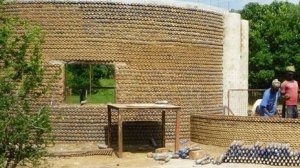“History is written by the victors.” – Attributed to Winston Churchill
That age-old, over-quoted saying is used mostly pertaining to the events that shaped the world of today. The victors spread their tales, and the losers – well, if they’re not completely wiped out – have less of an audience to share their side. Rather the winners’ story is the most widespread information, propagated through repetition, and rarely questioned. In his book “The Shock of the Old,” David Edgerton observes that this way of historical analysis is applied not just to events but also to technologies, and that it is limiting the way the future is discussed.
Semantically, I’m differentiating technologies from events as fluid from static. Events tend to fit in a timeline; they happened, they are no longer happening. Their repercussions could still be occurring to this day but the dates of the major battle, war, uprising, has been noted on some statue or book or other. Although the invention of technological breakthrough can occur on a certain day and that day can be noted, the use of the technology fluxes in and out of a timeline. I take Edgerton’s view that technologies are not a static point and should not be looked at as bygone as soon as a newer, fancier technology comes along.
Essentially, Edgerton points out that the future need not be achieved only through novelty (though he doesn’t flat out deny this as a possibility), but that it can also be achieved through looking backwards and innovating on what already exists. He also distinguishes technologies into the broad categories of innovation-centric and use-centered: concepts, ideas, theories, works-like models, and in-the-real-world things. “In the innovation-centric account, most places have no history of technology. In use-centered accounts, nearly everywhere does.” (Intro, xiii) The scope of technologies presented is understandably zoomed in on industrial technologies more closely linked to our present day. This allows Edgerton to effectively set up the rich world – where industrial inventions are born – and poor world – where outdated inventions are reborn.
So lets look at this rich world first, which is hinted to mean North America and Western Europe. Capitalism, democracy, liberty and equality are some of the words that come up when we think of the West. I also think the western world is self-centered and self-important, though with reason. The key inventions that spurred on industrialization – the printing press, Ford’s assembly line, planes and trains and automobiles – are of the West. Why even the origins of human beings was thought to be Western (European and English precisely) before scientists accepted proof of African origins. The Piltdown man skull, with its large brain and discovery in England, was the preferred origin story of humankind to the Taung child skull, small in brain size, preyed on by large birds, and found in South Africa. The Piltdown man turned out to be a hoax, our origins now nearly undisputedly settled. And while the western world had the most “significant” inventions and innovations of the past couple centuries, we should not ignore the poor-world in considering the future.
The mega power of China can attest. China can also serve to show that Edgerton focuses on physical things when he talks about technology, invention, and innovation. Technology may be physical, but invention and innovation certainly don’t have to be that constrained. They can be a new thought or approach. Back to China we see that the view of China’s economic rise is conflicted. A 2014 article by Jonathan Adelman for US News (probably not the best source for an unbiased opinion) contests that there is no way China can displace the US for top Superpower. Even though China has the top economy and economic growth, it lacks in democracy and freedom and technological innovation and surely those are necessary elements of a Superpower right? For economist Dambisa Moyo, it is precisely China’s state capitalism and lack of emphasis on democracy that has allowed the country to rise. The thesis of Moyo’s TED talk is that the innovation of a different economic system in China is shaping the way other emerging markets are thinking of growth. I’m not claiming China’s system of political authoritarianism is free of problems – indeed China seems wrought with corruption, or so I can tell from my parents. But consider that that level of influence I imagine is a key part of being a top Superpower.
I don’t wish to wholly discredit the rich world and its future visions though. In true fashion to the architects and designers of the industrial age, architects and designers today have visions of grandeur for the future too (though seemingly less fantastical given the advancements of today). One oncoming vision for the future of the Internet is something I only recently learned about from a friend: future-casting. Look for examples in the movies, notably the “Iron Man” franchise and Spike Jonze’s “Her”, for a globally connected world utilizing the space around us, not just a screen. The technology is not wholly complete though there is speculation of how the idea can play out. Frog Design’s Room-E aims at prototyping with projection technology to achieve their physical yet digital room.
But back on the topic of movies, we already know that future speculation is an increasingly popular theme. Superhero and sci-fi films earn BIG at the box office. While a lot of the movies propose amazing future technologies that have yet-to-be created (think again the Iron Man suit and digital rooms), there are also those that bring us a vision of the future with recognizable technologies. Bong Joon-ho’s “Snowpiercer” is set in a not-so-distant future of 2031 with an apocalyptic ice age that froze the world over in 2014 – just last year! Perhaps that is why the technology is reasonably believable in a situation that’s all sorts of ridiculous (but crazy fun). The train that the last living inhabitants of Earth are aboard, aside from being really, really long, and on a track that spans across the globe, is familiar. Trains are still in popular use today. To Edgerton’s point of technology being flexible and not one-track-minded, we see that even in heavily consumed entertainment, the visions of technological futures are diverse.
To show just how diverse the technology and innovation ranges from the poor world and the rich, Edgerton introduces the concept of ‘creole’ technologies – “[technologies] transplanted from their place of origin and finding uses on a greater scale elsewhere.” When he says “greater scale”, he means it quite literally. The examples he lists, such as oil drums, corrugated steel, and asbestos, involve taking what can be mistaken as junk from the West and using it to build nearly all the houses and structures in a village. Edgerton does not mean expansion or extrapolation on the materials other than the further manufacturing of different grades of corrugated steel. He makes the point that the repurposing of these technologies is the way innovation is achieved, but I think even he’s limiting the view of innovation in the poor world. Edgerton’s examples all bring up housing and building structures – shelter that is a necessity of life. Let’s look at some other innovative projects that are not just a simple re-use of unwanted Western objects.
One popularly reported project is the bottle housing most notably in Nigeria, but also done in South America and India. At first it probably seems complimentary to Edgerton’s examples, after all junk material is used to build a structure. But it’s not as simple as corrugated steel for roofs, asbestos-cement for walls, which is precisely why it’s gotten attention. The plastic bottles are filled with sand, stacked in a manner similar to how bricks would be stacked, and kept together using mud. The resulting structure is apparently bulletproof, more cost-effective, and sturdier than regular brick. In this example there is a combination of junk and local resources – something Edgerton advocates.
Also using bottles is Alfredo Moser, a Brazilian mechanic who figured out a way to light up housing without electricity. Two-liter bottles, filled with water and some bleach, are attached and secured through the roof of houses and something about their chemical makeup allows the bottle to glow. Moser’s invention is inexpensive and is to be installed (reportedly) in at least a million homes.
A project dependent entirely on local resources but using a simple technology is Diébédo Francis Kéré’s work in his impoverished birth village of Gando, Burkina Faso. Kéré humbly talks of his luck to be able to study abroad. And when he returned to his home village, he doesn’t try to bring in the near-obsolete materials of the rich-world. Instead he uses the humblest material clay in the form of mud bricks to build schools, libraries, and other places he wishes he had as child. The technology is nothing groundbreaking and so the villagers of Gando can all get involved. He gets the community involved in building places of opportunity to help create a more educated, resourceful population for the future of Burkina Faso.
Edgerton’s ultimate argument is that we shouldn’t shun the older, slightly outdated technologies – at least not until they are proven dangerous or useless. Technology doesn’t have to be entirely novel to move us closer to the future. His main goal of making his reader question the way technologies, inventions, and innovations are analyzed by the history books is successful. His reader is hopefully enticed to see innovation in the past when considering a future.
—–
David Edgerton “The Shock of the Old” 2006, 2008
Taung Child Skull – http://www.radiolab.org/story/taung-child/
Photo from Joseph E. Stiglitz for Vanity Fair “The Chinese Century” – http://www.vanityfair.com/news/2015/01/china-worlds-largest-economy
Jonathan Adelman for US News “China’s Long Road to Superpower Status” – http://www.usnews.com/opinion/blogs/world-report/2014/11/10/china-is-not-the-next-global-superpower
Dambisa Moyo TED Talk “Is China the new idol for emerging economies?” – http://www.ted.com/talks/dambisa_moyo_is_china_the_new_idol_for_emerging_economies/transcript?language=en
Frog Design Room-E – http://www.frogdesign.com/work/frog-room-e.html
Nigerian Bottle Housing – http://www.bbc.com/news/world-africa-14722179
Alfredo Moser – http://www.bbc.com/news/magazine-23536914
Diébédo Francis Kéré TED Talk “How to Build with Clay…and Community” –
http://www.ted.com/talks/diebedo_francis_kere_how_to_build_with_clay_and_community?language=en







“The Shock of the Old” is an incredibly broad text, focusing on everything from the manufacturing of specific gun models to national economic growth. Edgerton’s motives are sound; certainly if we decide we are displeased with the production of the present we should look to the past at a time when we were consuming less.
My problem with a lot of Edgerton’s novel is that design is “advanced” for a reason. There are vast inefficiencies that are eliminated with improved design. For example, from 1995-2010, automobile carbon emissions were reduced 25% in Europe. This reduction was achieved largely due to performance standards mandated by the European Automobile Manufacturer’s Association. Improvements in design that are obligated to be achieved seem a more logical solution than viewing design with a backwards mentality.
That being said, a lot of the exciting design you highlighted in your post, such as Alfredo Moser’s lights and the Nigerian Bottle Housing.Elizabeth, are exceptionally sustainable ideas. They certainly require no radically new materials or processes to be effective. Rather than inventing technologically based solutions, these retrofitting ideas instead invoke a new process for the material being used.
One thing I’d like to focus on is Edgerton’s seemingly condescending attitude towards more primitive cultures. Constantly throwing around facts about production and “the world’s superpowers”- Edgerton says at one point: “Travelling through the poor world it is hard to miss, today, a tiny
metal-working shop, in both country and city districts, where the
most complex bit of machinery may well be an oxyacetylene, or
electric, torch for welding.”
“Poor” in what way?
Why do we assume that when a culture lacks technological achievement they are in a lesser state of living? What if a community doesn’t want complex machinery? What if- heaven forbid- they are happy without the presence of computers and automobiles and other “superpower” inventions?
Certainly, no culture wants to be the victim of a commonly cured disease, but I think often people fail to realize the attitudes and desires of the cultures they speak of. Advancement has its place within the growth of civilization, but where is it taking us that is so much better the conditions of the “impoverished?”
Automobile emissions-
http://www.theicct.org/blogs/staff/importance-mandatory-standards
LikeLiked by 1 person
This paper generates a nice discussion of the potential of technological repurposing and it makes some interesting observations about Western centric views of the world (and their limits). I think some of Edgerton’s basic proposition could be drawn out a little more clearly. He is basically trying to contest technological determinist historical narratives and simple minded technological progressivism that sees history as shaped by magic bullets. Your paper really does an interesting job of drawing out some really interesting re-purposing that has gone on between North and South. The sand bottles that can be used to construct bullet proof walk and bleach bottles that generate light are fascinating. The piece perhaps could have said a little more though about how we often misunderstanding the continued vitality of technologies such as bicycles. I think that Aaron makes a really interesting point though in discussing the relationship between regulation, policy and design.
LikeLike